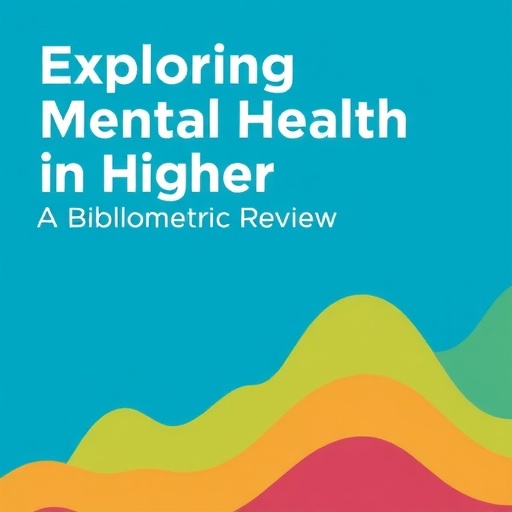In recent years, the focus on mental health within higher education has significantly intensified, highlighting the necessity for a thorough examination of existing research. The study conducted by H.Y. Ertem provides a comprehensive bibliometric analysis of studies related to mental health in higher education from 1960 to 2024. This meticulous assessment aims to uncover trends, patterns, and gaps in the research landscape, offering valuable insights into how mental health discussions and studies have evolved over the decades.
The historical perspective that this analysis brings forward is pivotal. By tracing the trajectory of mental health research in academia, Ertem depicts an era where mental health was often marginalized within educational discourse. Initially, discussions surrounding mental health were frequently overshadowed by academic performance metrics and institutional priorities. The late 20th century, however, marked a turning point, where the awareness of mental health issues began to gain momentum. The increasing acknowledgment of student mental well-being as integral to educational success catalyzed a burgeoning field of research.
Ertem’s bibliometric analysis meticulously categorizes the contributions of various studies, stretching across the sixty-four years in question. This expansive timespan not only captures the evolution of research methodologies but also reflects the changing societal attitudes towards mental health. Ertem’s research reveals an encouraging trend—academic scrutiny of mental health has progressively expanded, embracing a wider array of topics, including resilience, anxiety, depression, and the implications of social media on student mental health.
Further exploration in the study underscores the significant role that university policies and practices have played in shaping mental health research. Universities have begun to recognize that fostering a supportive environment for mental well-being directly correlates with academic performance and overall student satisfaction. As a result, the analysis identifies a noteworthy increase in reports documenting the efficacy of mental health services, intervention strategies, and comprehensive support programs offered within academic institutions.
Ertem also highlights how the intersectionality of mental health with other demographic factors—such as race, gender, and socioeconomic status—has been increasingly acknowledged in recent studies. This acknowledgment is critical for understanding the diverse experiences of students and the specific challenges they face. The elucidation of these subjects within research not only broadens the scope of academic inquiry but also serves as a crucial step towards ensuring that mental health support systems are equitable and accessible to all students.
Moreover, the analysis delves into the prominence of collaborative research in the mental health domain. Interdisciplinary studies that incorporate insights from psychology, neuroscience, sociology, and education have emerged as influential forces shaping understanding and strategies surrounding student mental well-being. This trend is indicative of the growing recognition that mental health is a multifaceted issue that cannot be adequately addressed through a singular lens.
Despite the growth evident in mental health research within higher education, Ertem does not shy away from addressing the existing gaps. Notably, the analysis points out that much of the research remains heavily skewed towards certain geographic locations and demographic groups. This disparity underlines the urgent need for inclusive research that encompasses diverse settings and varied student experiences, ensuring that all voices in the student community are represented.
Ertem’s bibliometric analysis offers a vital resource for academics, policymakers, and mental health practitioners. Its thorough examination of past and current trends paves the way for future research directions and potential policy revisions. By shedding light on what has been achieved thus far, the analysis sets the stage for ongoing discussions about mental health in academic settings and urges stakeholders to dedicate resources towards addressing the identified gaps.
As we continue to confront the escalating mental health crisis within higher education, Ertem’s work serves not only as a scholarly contribution but also as a clarion call for enhanced focus and action. The urgency of developing robust support frameworks, bolstered by research-informed practices, cannot be overstated, particularly in the wake of global challenges exacerbating mental health vulnerabilities among students.
Additionally, the bibliometric analysis reaffirms the necessity for long-term and sustained investment in mental health research at all institutional levels. By prioritizing mental health and embedding it in the broader educational mission, universities can help cultivate an ecosystem where students feel valued, supported, and empowered to thrive academically and personally. In a world where academic pressures are intensifying, ensuring that mental health receives paramount attention will undoubtedly lay the groundwork for a healthier, more resilient educational landscape.
As mental health in higher education continues to command attention, research like that conducted by Ertem will undoubtedly drive the narrative forward, fostering an informed community that advocates for transformative change. The insights derived from such comprehensive analyses will serve as foundational elements for crafting future research agendas, shaping effective interventions, and, ultimately, fostering environments conducive to student mental health and well-being.
Elevating mental health discussions to the forefront within academic institutions is more than just an academic endeavor; it is a moral imperative that requires collective effort and commitment from all stakeholders involved. The ongoing research and dialogues could very well determine the educational experiences of future generations, promoting a culture where mental health is perceived not only as a personal concern but as a collective responsibility towards achieving holistic student success.
In conclusion, the bibliometric analysis provided by H.Y. Ertem encapsulates both the evolution and the current state of mental health research in higher education, illuminating paths for future inquiry. It encapsulates the pressing need for continued advocacy, research, and policy reform to address the mental health challenges faced by students, ensuring that every individual has access to the support they need to thrive in their academic pursuits.
Subject of Research: Mental health in higher education
Article Title: Bibliometric analysis of studies on mental health in higher education from 1960 to 2024
Article References:
Ertem, H.Y. Bibliometric analysis of studies on mental health in higher education from 1960 to 2024.
Discov Psychol 5, 62 (2025). https://doi.org/10.1007/s44202-025-00402-y
Image Credits: AI Generated
DOI: 10.1007/s44202-025-00402-y
Keywords: Mental health, higher education, bibliometric analysis, student well-being, academic performance, interdisciplinary research.




